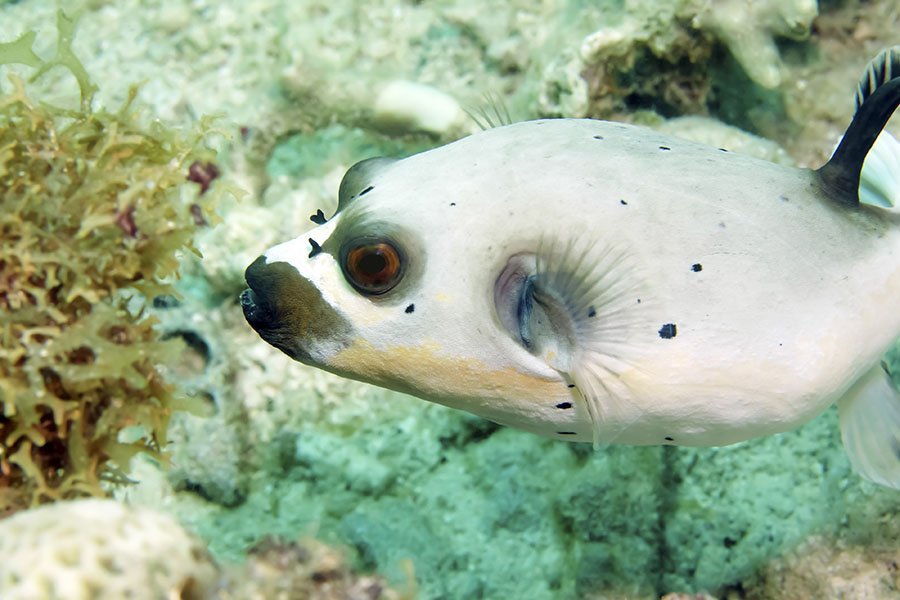The dog-faced puffer is the doggo of the sea

Bec Crew
Bec Crew

MEET THE DOG-faced puffer (Arothron nigropunctatus), a scaleless, inflatable species found in the tropical waters of the Indian and Pacific Oceans, including off the north and east coasts of Australia.
And don’t be fooled by those puppy dog eyes, because this puffer is laced with a toxin that’s 1,200 times more poisonous than cyanide.
Belonging to the family Tetraodontidae, which includes an array of species referred to as puffers, balloonfish, blowfish, toadfish, and sea squabs, the dog-faced puffer is one of the coolest.
It often sports some peculiar dark shading around its mouth and eyes, making it look like an underwater pup with patches on its face and a wet, black nose:

(Image Credit: CK Ma/Shutterstock)
It also has what look more like nostrils than gills, and it comes in a variety of colours, including bright yellow, white, grey, brown, blueish, or a combination of yellow and blue or white with yellow tips.
It will always have a few dark spots here and there, which is why the species is also known as the black-spotted pufferfish.
Unlike most fish, the dog-faced puffer doesn’t have scales. Instead it’s got two layers of rough, thick skin that’s so elastic, the fish can inflate itself to several times its regular size to ward off predators.
As Singapore’s S.E.A. Aquarium puts it, the whole system is bizarre:
“The inner layer is pleated like a Scotsman’s kilt. When the fish inflates, the skin extends and stiffens. When it deflates, the pleats return to a loose, dangly state. Without a second layer of skin to cover it up, the dog-faced puffer would look like a swimming raisin, with the dangly skin causing serious drag as it swims.”
Here’s what it looks like:
Almost all species of pufferfish produce tetrodotoxin as an extra layer of precaution against predators, if that inflated, spiny body doesn’t throw them off first. Tetrodotoxin is not only deadly to other sea life – at up to 1,200 times more poisonous than cyanide, it can be deadly to humans too.
According to National Geographic, there’s enough toxin in one pufferfish to kill 30 humans, and we’re yet to find an antidote.
But let’s not dwell on all the death and destruction.
Instead, I’ll leave you with an adorable dog-faced puffer that’s doing what any good doggo would do – plead silently for treats with big, sad eyes:




